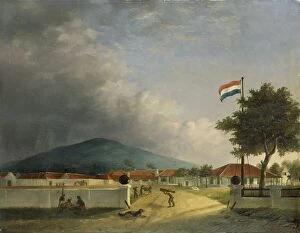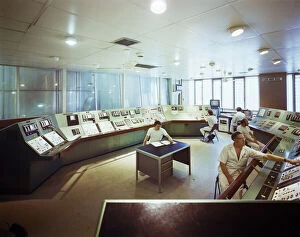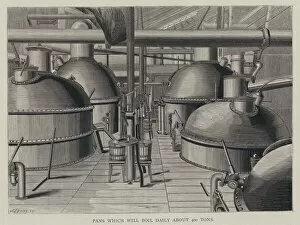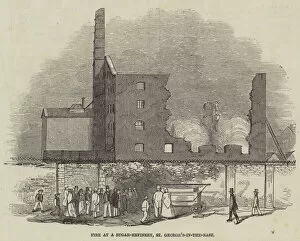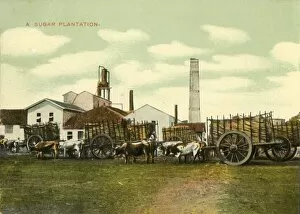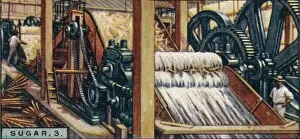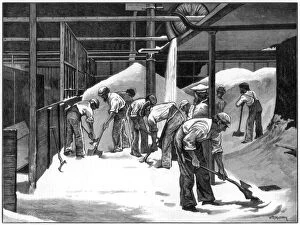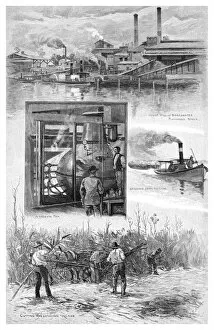Sugar Refinery Collection
"Sugar Refinery
For sale as Licensed Images
Choose your image, Select your licence and Download the media
"Sugar Refinery: A Journey Through Time and Technology" Step into the world of sugar refinement as we explore the captivating history and intricate processes behind this sweet industry. At the Sugar refinery control desk JLP01_10_12829, skilled workers meticulously oversee every aspect of production, ensuring quality and efficiency. The control desk serves as the nerve center, orchestrating a symphony of machinery to transform raw materials into refined sweetness. Witness the power of technology at Messrs Finzels Works with their vacuum-pan that can boil an astonishing 300 tons per week. This marvel of engineering showcases human ingenuity in harnessing steam power for mass production. Pans capable of boiling around 400 tons daily demonstrate how these refineries were true giants in their heyday. These engravings depict bustling scenes where workers tirelessly tend to massive vessels filled with bubbling molten sugar, creating a mesmerizing sight. However, not all was smooth sailing in this industry. The haunting image captured by Charles Balthazar Julien Fevret de Saint-Memin shows a fire engulfing a Sugar-Refinery in St George s-in-the-East. It serves as a reminder that even amidst progress, challenges could arise unexpectedly. Travel across borders to Cuba's vibrant plantations through an unknown artist's eyes. Here lies the heartland where sugarcane thrives under tropical sunsets - its juice destined for refining into crystalline perfection. Closer to home is London's Leman Street Sugar refinery from 1851 depicted by Vincent Brooks' artistry. This bustling hub symbolizes industrial growth during Victorian times when British refineries played a significant role on the global stage. Transport yourself back to Java in 1928 when laborers crushed cane stalks manually – an arduous task that required strength and endurance but yielded nature's golden nectar: sugar. The introduction of vacuum pans revolutionized refinement techniques in 1866.

